#MariaDB automation
Explore tagged Tumblr posts
Text
Automatic MariaDB Restart: Ensure Database Uptime
Discover how to automate your MariaDB monitoring with an easy-to-use bash script! Keep your database running smoothly by detecting downtimes and restarting MariaDB automatically. Say goodbye to unexpected service interruptions!
Ensuring the reliability of your database services is crucial for maintaining seamless application performance. MariaDB, a popular open-source relational database, can sometimes experience unexpected downtimes. To address this, implementing an automatic MariaDB restart script can be a game-changer. In this blog post, we’ll explore how to set up a bash script that monitors the MariaDB service and…
#automatic MariaDB restart script#bash script for MariaDB#CloudPanel#database maintenance script#database reliability#database uptime#MariaDB automation#MariaDB downtime solution#MariaDB monitoring#MariaDB systemd service#monitor and restart MariaDB
0 notes
Text
LAMP Application Development Services: Guide for Digital Product Teams
1. Snapshot: Why This Guide Matters
Linux + Apache + MySQL + PHP (the classic LAMP stack) remains one of the most proven ways to deliver secure, scalable, and cost‑effective web applications. Even in a cloud‑native, container‑heavy world, LAMP continues to power content platforms, SaaS dashboards, B2B portals, eCommerce sites, and customer self‑service tools. If you’re evaluating vendors or trying to decide whether to modernize, re‑platform, or extend an existing LAMP solution, this guide breaks down exactly what to expect from professional LAMP Application Development Services—and when partnering with a Custom Software Development Company USA makes strategic sense.

2. What Is the LAMP Stack (Modern View)
Classic definition still stands—but today’s implementations are more flexible:
Linux – Often Ubuntu, Amazon Linux, or containerized base images.
Apache (or Nginx swap‑in) – Many shops run Apache behind an Nginx reverse proxy, or go all‑Nginx.
MySQL / MariaDB – Managed cloud DBs (RDS, Cloud SQL) reduce ops load.
PHP – Frequently PHP 8.x with Composer, frameworks like Laravel, Symfony, or legacy codebases.
Modern LAMP ≠ legacy only. Your services partner should support containers, CI/CD, caching, and API integration.
3. When You Should Explore LAMP Application Development Services
Consider professional LAMP help if you face any of the following:
Legacy App Drag: Older PHP 5/7 code that needs PHP 8 migration.
Scaling Traffic Spikes: Marketing campaigns, seasonal commerce, or SaaS growth.
Security & Compliance Pressure: Patch levels, encrypted data, access policies.
Multi‑App Consolidation: Merging several microsites into one managed platform.
Custom API Extensions: Exposing internal systems to partners, apps, or BI tools.
Cloud Cost Optimization: Refactor to use managed DBs, auto‑scaling compute, and caching layers.
4. Core Capabilities to Expect from a LAMP Services Partner
A mature provider of LAMP Application Development Services should deliver:
Architecture & Code Audits – Identify upgrade blockers, vulnerabilities, and performance bottlenecks.
Custom Application Development – New modules, dashboards, data entry flows, and user roles.
Framework Upgrades / Refactors – Modernize to Laravel/Symfony or harden legacy PHP.
Database Design & Optimization – Schema refactoring, indexing, query tuning, read replicas.
API & Integration Engineering – REST/GraphQL, auth tokens, SSO, ERP/CRM connectors.
Performance & Caching Strategy – Opcode caching, Redis, CDN, asset compression.
DevOps & CI/CD Automation – Git pipelines, container builds, staging → prod promotion.
Monitoring, Support & SLA Maintenance – Uptime, security patches, capacity planning.
5. Why Work with a Custom Software Development Company USA
If your market, data residency, compliance audits, procurement teams, or funding stakeholders are US‑based, aligning with a Custom Software Development Company USA can accelerate approvals and reduce risk.
Advantages:
US Contracts & IP Governance – Simplifies enterprise onboarding.
Timezone Alignment for Stakeholder Demos – Faster acceptance cycles.
Regulatory Familiarity – HIPAA, SOC 2, PCI‑DSS, accessibility (Section 508 / WCAG).
Multi‑Stack Depth – LAMP + mobile apps + cloud + analytics under one umbrella.
Hybrid Delivery Models – Onshore strategy, offshore development for cost control.
8. Key Cost Drivers (Budget With Eyes Open)
Code complexity & legacy debt.
Framework modernization scope (plain PHP → Laravel).
Database scale, sharding, or replication needs.
Security compliance (pen tests, logging, audit trails).
Third‑party integrations (payments, analytics, SSO, ERP).
24/7 vs business‑hours support.
Onshore vs blended resource model (USA + global).
Request role‑based rate cards and a phased estimate: stabilize → optimize → extend.
9. Due Diligence Questions for LAMP Vendors
Technical
What PHP versions do you actively support? Any PHP 8 upgrade case studies?
How do you manage zero‑downtime DB migrations?
What caching layers do you recommend for high‑read workloads?
Security & Compliance
Patch cadence? Dependency scanning?
Experience with HIPAA / PCI hosting?
Process & Delivery
CI/CD tooling? Rollback strategy?
Communication rhythm (standups, demos, reports)?
Commercial
Do you offer fixed, T&M, or dedicated team pricing? Hybrid?
SLA tiers for uptime & response time?
10. SEO Implementation Tips for Your LAMP Services Page
To rank without keyword stuffing:
Use LAMP Application Development Services in the H1 or intro.
Reference geographic trust with Custom Software Development Company USA in a credibility or compliance section.
Add semantic variants: Linux hosting experts, PHP MySQL development, open‑source stack engineering.
Include structured data (Organization + Service schema).
Publish case studies with metrics: load speed, conversion lift, scaling stats.
Link internally to related stacks (PHP, Laravel, DevOps, Cloud Migration).
11. 10‑Step Implementation Roadmap (Copy + Adapt)
Business goals + technical baseline review.
Code & infrastructure audit (security, versioning, DB health).
Prioritize fixes vs new features.
Define hosting / cloud strategy (managed DB? containers?).
Upgrade PHP & dependencies (where needed).
Implement CI/CD + staging environments.
Add caching + performance instrumentation.
Build/refactor priority modules.
Security hardening + load validation.
Launch, monitor, iterate; move to managed support or dedicated team.
12. Final Takeaway & Call to Action
You don’t have to abandon proven systems to innovate. With the right LAMP Application Development Services partner—and especially when backed by a full‑spectrum Custom Software Development Company USA capable of compliance, scaling, and multi‑stack delivery—you can extend the life of existing assets and modernize for future growth.
Ready to evaluate vendors? Share your current stack (Linux distro, PHP version, DB size), performance pain points, and launch goals—I’ll help you outline a shortlist and next steps.
#LAMP Application Development Services#lamp development services#lamp stack development#lamp web development company
0 notes
Text
Staging on a VPS: Safely Preview Changes Before Going Live
🧪 How to Build a Staging Environment Using Your VPS
Safely test changes before going live — the smart way.
If you're running a website, web app, or SaaS project, you know the pain of broken layouts, buggy features, or downtime after updates. That’s where a staging environment comes in — a replica of your live website where you can test everything before going public.
In this guide, you’ll learn how to set up a reliable staging environment using your VPS hosting (ideal if you're hosted with VCCLHOSTING).
🧠 What Is a Staging Environment?
A staging environment is a testing ground — separate from your production (live) server — that simulates the real-world environment of your website or app. You can use it to:
Test design updates, new features, or plugin installs
Preview major code or content changes
Troubleshoot performance and security
Collaborate with your dev or QA team
Avoid downtime or user experience issues
🛠️ Why Use a VPS for Staging?
Using a VPS (Virtual Private Server) gives you:
Root access for full control
Dedicated resources (RAM, CPU)
Ability to isolate staging from live environment
Freedom to run multiple domains/subdomains or even container-based staging setups
💡 Tip: If you're using VCCLHOSTING, you can easily configure multiple environments on a single VPS or request an additional one at discounted rates for dev/testing purposes.
🧰 Tools You’ll Need
A VPS with Linux (Ubuntu/Debian/CentOS)
Web server: Apache or NGINX
PHP, MySQL/MariaDB stack (or your app’s language/runtime)
Optional: Git, Docker, cPanel, or phpMyAdmin
Domain/subdomain for staging (e.g., staging.yoursite.com)
🔧 Steps to Build a Staging Environment
1. Create a Subdomain or Separate Directory
Subdomain method: Set up staging.yourdomain.com in your DNS settings Point it to a new virtual host directory on your VPS
Folder method: Use a separate folder like /var/www/html/staging
✅ If you use cPanel or DirectAdmin (available on VCCLHOSTING), this can be done with a few clicks.
2. Clone Your Production Site
Manually copy your website files (via SFTP, rsync, or Git)
Export your live database and import it to a new one (e.g., staging_db)
Update configuration files:
Database credentials
Site URL paths (e.g., in WordPress: update wp-config.php and wp_options table)
3. Add Security
You don’t want Google indexing your staging site or hackers testing exploits.
Use .htpasswd to password-protect the staging directory
Block indexing via robots.txt
Restrict IP addresses if needed
Use HTTPS (let's Encrypt SSL or clone your live certificate)
4. Use Version Control (Recommended)
Set up Git to manage your staging deployments:
bashCopy
Edit
git clone https://github.com/yourrepo/project.git
This allows your devs to push to staging for testing before merging to live.
5. Test Your Changes in Staging First
Always use staging to:
Apply plugin/theme updates
Run database migrations
Test performance under simulated load
QA user flows, logins, carts, or contact forms
Once everything works in staging, deploy to live using:
Git-based CI/CD
Manual sync
Hosting control panel tools (e.g., Softaculous staging)
🤖 Bonus: Automate Staging with Docker or Containers
If you manage multiple apps, use Docker Compose or Kubernetes to quickly spin up isolated environments on your VPS.
Example with Docker Compose:
yamlCopy
Edit
version: '3' services: app: image: php:8.1-apache volumes: - ./code:/var/www/html ports: - "8081:80"
🛡️ Staging Environments with VCCLHOSTING
With VCCLHOSTING VPS, you get:
Full root access to configure staging as needed
Support for Linux or Windows environments
Optional cPanel/DirectAdmin for GUI-based staging
Local data center in Kolhapur for low-latency testing
Backup & restore tools to sync between live and staging
🧠 Final Thoughts
A staging environment isn’t just for big companies — it’s for anyone who cares about uptime, stability, and professionalism. Whether you're running a SaaS project or an eCommerce store, setting up staging on your VPS saves time, avoids downtime, and helps you launch with confidence.
🚀 Need Help Setting It Up?
Talk to the team at VCCLHOSTING — we’ll help you set up a staging-ready VPS with backup, SSH, and everything pre-configured.
🔗 www.vcclhosting.com 📞 Call us: 9096664246
0 notes
Text
2025 Development Essential! The All-in-One Integrated Development Toolkit
Integrated development environments, encompassing web servers, databases, and server-side scripting languages, streamline the entire development life cycle for web applications. Here, we present a visually engaging overview of key all-in-one development tools designed to simplify the development process and offer a convenient environment for developers.
ServBay
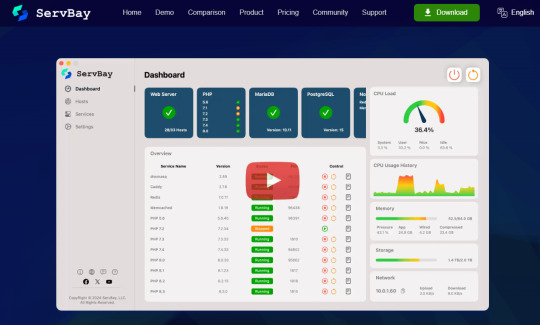
ServBay is a local web dev environment designed for macOS, integrating popular components such as the Apache/Nginx/Caddy server, MariaDB, PostgreSQL databases, Redis, Memcached, and database management tools like phpMyAdmin and adminer.
Features: It provides the ability to run multiple hosts simultaneously, supports custom domain names using non-existent TLDs, offers free SSL certificates to developers, and simplifies local network request routing and management through local DNS services. Additionally, it includes a standalone development package, allowing developers to recompile and integrate uniquely or custom-built software, greatly enhancing the smoothness and efficiency of web development, like Python, Java, Node.js.
XAMPP
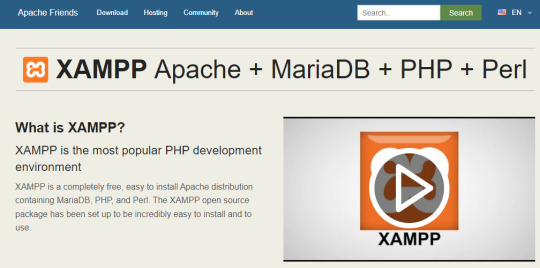
XAMPP is a cross-platform solution supporting operating systems such as Windows, Linux, Mac OS X. It integrates tools like the Apache server, MySQL database, PHP, and Perl.
Features: Easy installation and configuration suitable for both beginners and experienced developers. It provides a control panel for quick starting and stopping of the server, allowing developers to easily set up a local development environment, meeting most web development needs.
WampServer
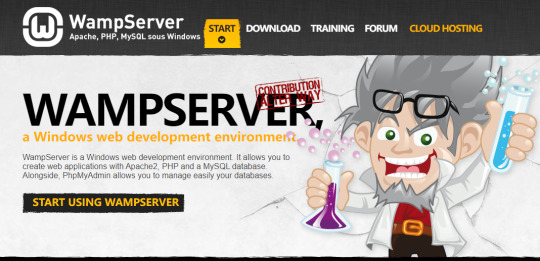
WampServer is a web development environment designed specifically for the Windows operating system, integrating Apache server, MySQL database, PHP, and phpMyAdmin.
Features: Similar to XAMPP, it offers an intuitive user interface for easy server configuration and database management. It supports quick switching of PHP versions, enabling developers to easily test different PHP environments.
Laragon
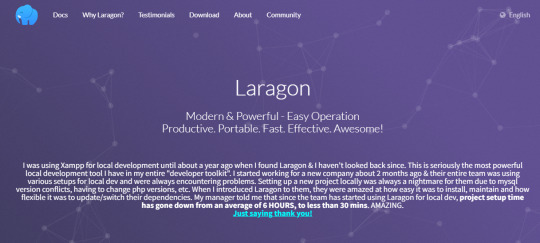
Laragon is a lightweight and efficient web development environment supporting Windows. It integrates Apache or Nginx servers, MySQL database, PHP, and tools like Composer.
Features: A portable web development tool offering fast virtual host creation and configuration, supporting multiple PHP versions, and automated SSL settings. It includes additional tools such as Quick App creation and automatic virtual host mapping.
Docker
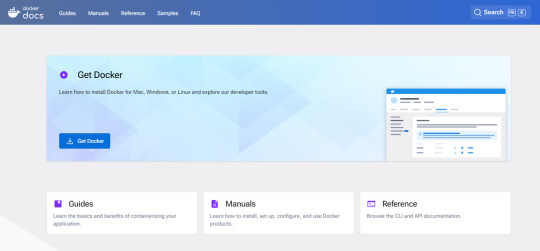
Docker is a containerization platform that allows developers to package applications and their dependencies into containers. Docker Compose can define multi-container application stacks, including web servers, databases, and other services.
Features: Provides strong portability and consistency, enabling developers to easily deploy applications in different environments. It supports rapid container building, sharing, and management, suitable for complex application architectures with a learning curve.
Ampps
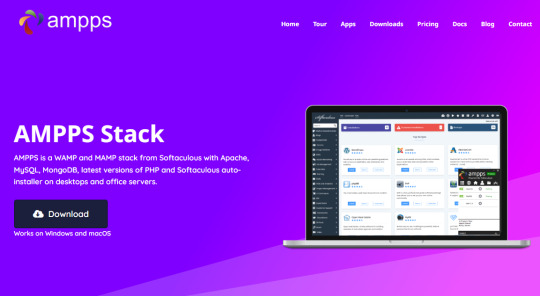
Ampps is a cross-platform web development environment supporting Windows and Mac OS X. It includes Apache server, MySQL database, PHP, Perl, and Python.
Features: Ampps provides an intuitive graphical user interface, supports one-click installation and configuration. It includes additional tools such as domain management and SSL settings. Currently, it is a paid tool.
Conclusion
The presented tools cater to various needs, allowing developers to choose based on their preferences. Beginners may find high-integration and user-friendly options like XAMPP, ServBay, or WampServer suitable. Cross-platform support is available through XAMPP or Docker, and specific functionalities can be addressed with tools like Servbay's custom domain and database management. This introduction aims to guide developers in selecting the most fitting all-in-one integrated development tool for their unique requirements.
1 note
·
View note
Text

Senior Python Developer (JB5426) Cape Town, Northern Suburbs (Hybrid) R Negotiable, dependent on experience Permanent Work on the rebuild of a core insurance platform using Python and Django. You'll lead dev efforts, shape architecture, and mentor others in a modern, security-focused environment. Minimum Requirements: 4 or more years of experience as a Python Developer (2 or more at senior level) Django, API design, MySQL/MariaDB CI/CD, DevOps, system security JS frameworks, containers, and automation Advantageous: fintech/insurance industry experience
@kontakrecruitmentagency For full JD & to apply online https://bit.ly/PythonDevJB5426 Know someone perfect for this role? Tag them below! 👇
0 notes
Text
Web Hosting Best Practices Suggested by Top Development Companies
Behind every fast, reliable, and secure website is a solid web hosting setup. It’s not just about picking the cheapest or most popular hosting provider—it's about configuring your hosting environment to match your website’s goals, growth, and user expectations.
Top development firms understand that hosting is foundational to performance, security, and scalability. That’s why a seasoned Web Development Company will always start with hosting considerations when launching or optimizing a website.
Here are some of the most important web hosting best practices that professional agencies recommend to ensure your site runs smoothly and grows confidently.
1. Choose the Right Hosting Type Based on Business Needs
One of the biggest mistakes businesses make is using the wrong type of hosting. Top development companies assess your site’s traffic, resource requirements, and growth projections before recommending a solution.
Shared Hosting is budget-friendly but best for small, static websites.
VPS Hosting offers more control and resources for mid-sized business sites.
Dedicated Hosting is ideal for high-traffic applications that need full server control.
Cloud Hosting provides scalability, flexibility, and uptime—perfect for growing brands and eCommerce platforms.
Matching the hosting environment to your business stage ensures consistent performance and reduces future migration headaches.
2. Prioritize Uptime Guarantees and Server Reliability
Downtime leads to lost revenue, poor user experience, and SEO penalties. Reliable hosting providers offer uptime guarantees of 99.9% or higher. Agencies carefully vet server infrastructure, service level agreements (SLAs), and customer reviews before committing.
Top development companies also set up monitoring tools to get real-time alerts for downtime, so issues can be fixed before users even notice.
3. Use a Global CDN with Your Hosting
Even the best hosting can’t overcome long physical distances between your server and end users. That’s why agencies combine hosting with a Content Delivery Network (CDN) to improve site speed globally.
A CDN caches static content and serves it from the server closest to the user, reducing latency and bandwidth costs. Hosting providers like SiteGround and Cloudways often offer CDN integration, but developers can also set it up independently using tools like Cloudflare or AWS CloudFront.
4. Optimize Server Stack for Performance
Beyond the host, it’s the server stack—including web server software, PHP versions, caching tools, and databases—that impacts speed and stability.
Agencies recommend:
Using NGINX or LiteSpeed instead of Apache for better performance
Running the latest stable PHP versions
Enabling server-side caching like Redis or Varnish
Fine-tuning MySQL or MariaDB databases
A well-configured stack can drastically reduce load times and handle traffic spikes with ease.
5. Automate Backups and Keep Them Off-Site
Even the best servers can fail, and human errors happen. That’s why automated, regular backups are essential. Development firms implement:
Daily incremental backups
Manual backups before major updates
Remote storage (AWS S3, Google Drive, etc.) to protect against server-level failures
Many top-tier hosting services offer one-click backup systems, but agencies often set up custom scripts or third-party integrations for added control.
6. Ensure Security Measures at the Hosting Level
Security starts with the server. Professional developers configure firewalls, security rules, and monitoring tools directly within the hosting environment.
Best practices include:
SSL certificate installation
SFTP (not FTP) for secure file transfer
Two-factor authentication on control panels
IP whitelisting for admin access
Regular scans using tools like Imunify360 or Wordfence
Agencies also disable unnecessary services and keep server software up to date to reduce the attack surface.
7. Separate Staging and Production Environments
Any reputable development company will insist on separate environments for testing and deployment. A staging site is a replica of your live site used to test new features, content, and updates safely—without affecting real users.
Good hosting providers offer easy staging setup. This practice prevents bugs from slipping into production and allows QA teams to catch issues before launch.
8. Monitor Hosting Resources and Scale Proactively
As your website traffic increases, your hosting plan may need more memory, bandwidth, or CPU. Agencies set up resource monitoring tools to track usage and spot bottlenecks before they impact performance.
Cloud hosting environments make it easy to auto-scale, but even on VPS or dedicated servers, developers plan ahead by upgrading components or moving to load-balanced architectures when needed.
Conclusion
Your hosting setup can make or break your website’s success. It affects everything from page speed and security to uptime and scalability. Following hosting best practices isn’t just technical housekeeping—it’s a strategic move that supports growth and protects your digital investment.
If you're planning to launch, relaunch, or scale a website, working with a Web Development Company ensures your hosting isn’t left to guesswork. From server stack optimization to backup automation, they align your infrastructure with performance, safety, and long-term growth.
0 notes
Video
youtube
Amazon RDS for MariaDB | Simplify Database Management RDS for MariaDB is a fork of MySQL, offering additional features, security enhancements, and improved performance. It is fully compatible with MySQL and provides a rich ecosystem of storage engines, plugins, and tools.- Key Features: - Enhanced security features like data-at-rest encryption and data masking. - Support for MariaDB-specific features such as the Aria storage engine. - Seamless compatibility with MySQL, enabling easy migration. - Automated backups, monitoring, and maintenance.- Use Cases: - Applications needing advanced security and performance. - Users looking for an enhanced, open-source alternative to MySQL. - Web applications with moderate to high traffic.Key Benefits of Choosing the Right Amazon RDS Database:1. Optimized Performance: Select an engine that matches your performance needs, ensuring efficient data processing and application responsiveness. 2. Scalability: Choose a database that scales seamlessly with your growing data and traffic demands, avoiding performance bottlenecks. 3. Cost Efficiency: Find a solution that fits your budget while providing the necessary features and performance. 4. Enhanced Features: Leverage advanced capabilities specific to each engine to meet your application's unique requirements. 5. Simplified Management: Benefit from managed services that reduce administrative tasks and streamline database operations.Conclusion:Choosing the right Amazon RDS database engine is critical for achieving the best performance, scalability, and functionality for your application. Each engine offers unique features and advantages tailored to specific use cases, whether you need the speed of Aurora, the extensibility of PostgreSQL, the enterprise features of SQL Server, or the robustness of Oracle. Understanding these options helps ensure that your database infrastructure meets your application’s needs, both now and in the future.
#youtube#Amazon RDS RDS Monitoring AWS Performance Insights Optimize RDS Amazon CloudWatch Enhanced Monitoring AWS AWS DevOps Tutorial AWS Hands-On C#amazon auroraaurora databasecloud computingaws cloudamazon aurora deep diveamazon aurora vs rdsserverless databaseamazon aurora databaseaws#AmazonRDS RDSMonitoring PerformanceInsights CloudWatch AWSDevOps DatabaseOptimization ClouDolus ClouDolusPro
0 notes
Text
How to Drop Tables in MySQL Using dbForge Studio: A Simple Guide for Safer Table Management
Learn how to drop a table in MySQL quickly and safely using dbForge Studio for MySQL — a professional-grade IDE designed for MySQL and MariaDB development. Whether you’re looking to delete a table, use DROP TABLE IF EXISTS, or completely clear a MySQL table, this guide has you covered.
In article “How to Drop Tables in MySQL: A Complete Guide for Database Developers” we explain:
✅ How to drop single and multiple tables Use simple SQL commands or the intuitive UI in dbForge Studio to delete one or several tables at once — no need to write multiple queries manually.
✅ How to use the DROP TABLE command properly Learn how to avoid errors by using DROP TABLE IF EXISTS and specifying table names correctly, especially when working with multiple schemas.
✅ What happens when you drop a table in MySQL Understand the consequences: the table structure and all its data are permanently removed — and can’t be recovered unless you’ve backed up beforehand.
✅ Best practices for safe table deletion Backup first, check for dependencies like foreign keys, and use IF EXISTS to avoid runtime errors if the table doesn’t exist.
✅ How dbForge Studio simplifies and automates this process With dbForge Studio, dropping tables becomes a controlled and transparent process, thanks to:
- Visual Database Explorer — right-click any table to drop it instantly or review its structure before deletion. - Smart SQL Editor — get syntax suggestions and validation as you type DROP TABLE commands. - Built-in SQL execution preview — see what will happen before executing destructive commands. - Schema and data backup tools — create instant backups before making changes. - SQL script generation — the tool auto-generates DROP TABLE scripts, which you can edit and save for future use. - Role-based permissions and warnings — helps prevent accidental deletions in shared environments.
💡 Whether you’re cleaning up your database or optimizing its structure, this article helps you do it efficiently — with fewer risks and more control.
🔽 Try dbForge Studio for MySQL for free and experience smarter MySQL development today: 👉 https://www.devart.com/dbforge/mysql/studio/download.html
1 note
·
View note
Text
PHP CRUD Generator Nulled Script 2.3.1

Download PHP CRUD Generator Nulled Script for Free Looking for a powerful and intuitive way to generate PHP CRUD applications without writing endless lines of code? The PHP CRUD Generator Nulled Script is your go-to solution. This dynamic tool allows developers and non-developers alike to generate responsive, professional-grade PHP admin panels within minutes — completely free. What is PHP CRUD Generator Nulled Script? The PHP CRUD Generator Nulled Script is a premium tool designed to automate the creation of Create, Read, Update, and Delete (CRUD) functionalities in PHP projects. Whether you're building a back-office dashboard, managing databases, or creating dynamic web apps, this script simplifies your workflow by offering a visual interface that connects directly to your MySQL database. And now, thanks to the nulled version, you can enjoy all premium features without spending a dime. Technical Specifications Language Support: PHP 7.x and PHP 8.x Database: MySQL and MariaDB compatibility Framework Independent: Works with plain PHP or any framework Installation: One-click setup wizard Responsive: Bootstrap-based admin panel Key Features and Benefits 1. Visual CRUD Interface The script allows you to visually build CRUD operations using an intuitive UI. No coding is needed — simply select tables, define relationships, and generate ready-to-use PHP code instantly. 2. Time-Saving Automation Save hours of development time by letting the PHP CRUD Generator automate repetitive coding tasks. Focus on your app's logic while the tool handles the backend scaffolding. 3. Fully Customizable Output The generated code is clean, modular, and fully editable. You can tweak it to match your specific requirements or integrate it into your existing projects seamlessly. 4. Advanced Filters and Search Each generated CRUD interface comes equipped with advanced filtering, sorting, and search features to make data management a breeze. 5. Secure and Reliable While the script is nulled, it retains all security features found in the original version. You can trust it to manage your data efficiently and securely. Common Use Cases Admin dashboards for small to medium businesses Inventory and stock management systems Customer relationship management tools Educational portals and student record systems Personal or freelance PHP projects How to Install PHP CRUD Generator Nulled Script Installing the nulled version of PHP CRUD Generator is straightforward: Download the PHP CRUD Generator Nulled Script from our website. Extract the zip file and upload the contents to your server directory. Open your browser and navigate to the setup URL. Follow the step-by-step installation wizard and connect to your MySQL database. Select tables, configure settings, and generate your CRUD panels instantly. That’s it! Your admin panel is ready to use with full create, read, update, and delete capabilities. Frequently Asked Questions (FAQs) Is it safe to use the PHP CRUD Generator Nulled Script? Yes, the nulled script offered on our site is tested and free from malware. However, we recommend using it only for educational or personal projects unless you have appropriate licensing for commercial deployment. Can I use this script on multiple projects? Absolutely. The nulled version removes usage limitations, allowing you to implement it across as many projects as you like. Is technical support available? Support is not included with nulled versions. For troubleshooting, refer to community forums or consider purchasing the official version for full support. Does it work with the latest PHP version? Yes, the script is compatible with the latest PHP releases including PHP 8.x, ensuring seamless performance and security. Why Download From Us? Our platform offers high-quality, pre-tested nulled tools for developers. Not only do we provide the PHP CRUD Generator for free, but we also offer exclusive access to other top-rated tools like iThemes Security Pro NULLED, ensuring you get the best resources under one roof.
Need themes too? Check out the latest Enfold NULLED theme to build a stunning front end for your next project. Final Thoughts The PHP CRUD Generator Nulled Script is a game-changer for developers seeking efficiency, flexibility, and powerful admin capabilities. Download it now from our site and streamline your PHP development with ease — no extra cost, no hidden fees, just powerful performance for free.
0 notes
Text
Integrating ROSA Applications with AWS Services (CS221)
Introduction
Red Hat OpenShift Service on AWS (ROSA) is a fully managed OpenShift solution that allows organizations to deploy, manage, and scale containerized applications in the AWS cloud. One of the biggest advantages of ROSA is its seamless integration with AWS services, enabling developers to build robust, scalable, and secure applications.
In this blog, we will explore how ROSA applications can integrate with AWS services like Amazon RDS, S3, Lambda, IAM, and CloudWatch, ensuring high performance, security, and automation.
1️⃣ Why Integrate ROSA with AWS Services?
By leveraging AWS-native services, ROSA users can: ✅ Reduce operational overhead with managed services ✅ Improve scalability with auto-scaling and elastic infrastructure ✅ Enhance security with AWS IAM, security groups, and private networking ✅ Automate deployments using AWS DevOps tools ✅ Optimize costs with pay-as-you-go pricing
2️⃣ Key AWS Services for ROSA Integration
1. Amazon RDS for Persistent Databases
ROSA applications can connect to Amazon RDS (PostgreSQL, MySQL, MariaDB) for reliable and scalable database storage.
Use AWS Secrets Manager to securely store database credentials.
Implement VPC peering for private connectivity between ROSA clusters and RDS.
2. Amazon S3 for Object Storage
Store logs, backups, and application assets using Amazon S3.
Utilize S3 bucket policies and IAM roles for controlled access.
Leverage AWS SDKs to interact with S3 storage from ROSA applications.
3. AWS Lambda for Serverless Functions
Trigger Lambda functions from ROSA apps for event-driven automation.
Examples include processing data uploads, invoking ML models, or scaling workloads dynamically.
4. AWS IAM for Role-Based Access Control (RBAC)
Use IAM roles and policies to manage secure interactions between ROSA apps and AWS services.
Implement fine-grained permissions for API calls to AWS services like S3, RDS, and Lambda.
5. Amazon CloudWatch for Monitoring & Logging
Use CloudWatch Metrics to monitor ROSA cluster health, application performance, and scaling events.
Integrate CloudWatch Logs for centralized logging and troubleshooting.
Set up CloudWatch Alarms for proactive alerting.
3️⃣ Steps to Integrate AWS Services with ROSA
Step 1: Configure IAM Roles
1️⃣ Create an IAM Role with necessary AWS permissions. 2️⃣ Attach the role to your ROSA cluster via IAM OpenShift Operators.
Step 2: Secure Network Connectivity
1️⃣ Use AWS PrivateLink or VPC Peering to connect ROSA to AWS services privately. 2️⃣ Configure security groups to restrict access to the required AWS endpoints.
Step 3: Deploy AWS Services & Connect
1️⃣ Set up Amazon RDS, S3, or Lambda with proper security configurations. 2️⃣ Update your OpenShift applications to communicate with AWS endpoints via SDKs or API calls.
Step 4: Monitor & Automate
1️⃣ Enable CloudWatch monitoring for logs and metrics. 2️⃣ Implement AWS EventBridge to trigger automation workflows based on application events.
4️⃣ Use Case: Deploying a Cloud-Native Web App with ROSA & AWS
Scenario: A DevOps team wants to deploy a scalable web application using ROSA and AWS services.
🔹 Frontend: Runs on OpenShift pods behind an AWS Application Load Balancer (ALB) 🔹 Backend: Uses Amazon RDS PostgreSQL for structured data storage 🔹 Storage: Amazon S3 for storing user uploads and logs 🔹 Security: AWS IAM manages access to AWS services 🔹 Monitoring: CloudWatch collects logs & triggers alerts for failures
By following the above integration steps, the team ensures high availability, security, and cost-efficiency while reducing operational overhead.
Conclusion
Integrating ROSA with AWS services unlocks powerful capabilities for deploying secure, scalable, and high-performance applications. By leveraging AWS-managed databases, storage, serverless functions, and monitoring tools, DevOps teams can focus on innovation rather than infrastructure management.
🚀 Ready to build cloud-native apps with ROSA and AWS? Start your journey today!
🔗 Need expert guidance? www.hawkstack.com
0 notes
Text
cPanel Server Management Services By CloudMinister Technologies
1. Overview of cPanel Server Administration
What is cPanel?
A web-based management panel called cPanel makes it simple for customers to handle databases, emails, websites, and server configurations. Users of dedicated servers, VPS, and shared hosting companies are very fond of it.
cPanel Server Management: Why Is It Important?
Installing the panel is only one aspect of managing a cPanel server; other tasks include performance optimization, security upgrades, frequent updates, and backup administration to keep the server operating efficiently. Without effective management, companies may encounter:
Customer displeasure due to downtime.
Security flaws that make data vulnerable to attacks.
Performance problems impact user experience and website speed.
The Function of CloudMinister Technologies in cPanel Administration
Expert-level administration services are provided by CloudMinister Technologies to guarantee that your cPanel servers are secure, optimized, and constantly watched. Our objectives are to improve performance, stop problems before they start, and offer prompt fixes when they do occur.
2. CloudMinister Technologies' Principal Services
A. Configuring and Setting Up the Server
For optimum performance, cPanel server setup necessitates meticulous installation and configuration. Our professionals:
Set up and install WHM and cPanel on Linux-based servers.
Optimize the server's initial configuration for performance and security.
Configure mail servers, databases, FTP, and DNS.
B. Enhancement of Performance
Both SEO rankings and user experience may suffer from a sluggish server. We guarantee:
Nginx and Apache configurations were improved for speed.
Optimizing MariaDB and MySQL databases for quicker queries.
Turning on caching tools (like Memcached, Redis, or LiteSpeed).
C. Hardening of Security
A server can be rendered inoperable by security risks such as malware, DDoS attacks, and brute-force attacks. Among our security options are:
Configure a firewall (iptables, CSF) to stop unwanted access.
Malware detection and elimination with programs such as ClamAV and Maldet.
SSL implementation for connections that are encrypted.
Defense against brute-force attacks with cPHulk and Fail2Ban.
D. Frequent Patch Management & Updates
An important security risk is outdated software.
We Update the OS, software, and cPanel.
As soon as important security patches are made available, apply them.
Verify compatibility with the most recent database and PHP versions.
E. Disaster Recovery & Backup
For corporations, data loss may be disastrous. We offer:
Daily, weekly, or monthly backups that are automated.
In the event of a failure, disaster recovery solutions enable prompt restoration.
Offsite backup storage is necessary to protect data.
F. Constant Monitoring and Assistance
To avoid downtime, servers require constant monitoring. Our group:
keeps an eye on resource utilization, server health, and uptime in real time.
offers immediate problem solving to avoid interruptions.
provides live chat, email, and phone technical help around-the-clock.
3. CloudMinister cPanel Management Services Advantages
There are various benefits to using CloudMinister Technologies for cPanel server management.
A. Economical Remedies
Reasonably priced for companies of all kinds.
Employing in-house server administrators is not necessary.
Adaptable plans according to needs
B. Professional Staff:
Certified cPanel and Linux administrators.
years of expertise in overseeing intricate hosting setups.
C. Tailored Assistance
Solutions that are customized to meet corporate objectives.
Individualized advice and consulting.
D. Excellent Performance & Uptime
Utilizing proactive monitoring to guarantee 99.9% uptime.
Performance tweaking might result in faster website loading times.
4. What Makes CloudMinister Technologies the Best Option?
A. Experience Years
CloudMinister Technologies has maintained servers for startups, businesses, and web hosting organizations all over the world.
B. A client-centered methodology
By providing dependable, 24-hour assistance and specialized server administration solutions, we put the needs of our customers first.
C. A Track Record of Success
Thousands of cPanel servers have been managed by CloudMinister Technologies in the past, assisting companies in creating high-performance, safe, and seamless hosting environments.
5. Final Thoughts
Effective cPanel server management is essential for maintaining website performance, security, and uptime. CloudMinister Technologies provides a comprehensive, expert-driven approach to cPanel management, ensuring businesses can focus on growth without worrying about server issues.
If you're looking for reliable and professional cPanel server management services, CloudMinister Technologies is your trusted partner.
Contact us today to optimize your cPanel server!
For More Visit:- https://cloudminister.com/
#server management#cPanel#servers#cloudminister technologies#web hosting#c panel server management services
0 notes
Text
Hire the Right PHP Development Company: A Complete Business Guide
1. Snapshot: Why This Guide Matters
PHP still powers a massive portion of the modern web—from global CMS platforms (WordPress, Drupal) to custom business portals, eCommerce backends, SaaS dashboards, and API-driven applications. If you’re evaluating whether to partner with a PHP Development Company or upgrade to a more strategic engagement with a PHP Web Development Company that also offers consulting, DevOps, and performance optimization, this guide gives you a structured, point-by-point decision framework. It’s built for founders, product leaders, IT managers, and agencies that need scale without chaos.

2. When Should You Hire a PHP Development Company?
You’re scaling beyond a freelancer. Project complexity, integrations, and uptime guarantees require a team.
You need faster release cycles. Dedicated teams can parallelize feature dev, QA, and deployment.
Security & compliance pressure is rising. Payment data, healthcare data, or enterprise single sign-on needs experienced PHP engineers.
Legacy PHP app, modern expectations. Refactor, containerize, or migrate to PHP 8.x with performance improvements.
Multi-site or multi-tenant platforms. A centralized codebase, modular architecture, and shared libraries demand process maturity.
3. What a PHP Web Development Company Typically Delivers
A strong PHP Web Development Company extends beyond coding pages. Expect:
Architecture & Technical Discovery – Assess code quality, dependencies, and hosting.
Custom Module / Plugin Development – Extend CMS or frameworks (Laravel, Symfony, CodeIgniter, WordPress customizations).
API Development & Integration – REST / GraphQL endpoints, third-party SaaS, auth layers.
Performance Optimization – Caching (Redis, Varnish), query tuning, load balancing.
Scalable Hosting Setup – Containerization, CI/CD, auto-scaling cloud environments.
Ongoing Maintenance & SLA Support – Patching, upgrades, uptime monitoring.
4. PHP Tech Stack Highlights (Know What to Ask For)
Languages & Versions: PHP 8.x recommended for speed & type safety improvements.
Frameworks:
Laravel – Rapid development, built-in tooling, queue system, Blade templating.
Symfony – Enterprise-grade, modular components, strong config & testing.
CodeIgniter / Slim – Lightweight use cases.
CMS & Commerce: WordPress, Drupal, Magento (Adobe Commerce), WooCommerce.
Databases: MySQL/MariaDB, PostgreSQL, MongoDB (via abstraction layers).
Infrastructure: Nginx/Apache, Docker, Kubernetes, AWS, GCP, Azure.
When screening partners, confirm which of these they actively support in production.
5. Engagement Models: Which Works Best?
If you’re aiming for velocity + continuity, Hire Dedicated ReactJS Developers-style models in the JavaScript world have an analog in PHP: dedicated pods. (Yes, even if this is a PHP article, cross-stack thinking helps!)
6. Evaluating a PHP Development Company: 15-Point Checklist
Use or adapt this when shortlisting vendors.
Do they position themselves as a PHP Development Company or a broader full-stack shop?
Experience with PHP 8.x migrations?
Proven work in your vertical (SaaS, eCommerce, healthcare, FinTech)?
Familiar with major frameworks (Laravel/Symfony)?
Source control discipline (GitFlow, trunk-based, protected branches)?
Automated testing coverage goals?
CI/CD pipelines in place?
Containerization strategy (Docker, K8s)?
Performance metrics & load testing approach?
Code review & security audit process?
Documentation standards?
Communication cadence (daily standups, weekly demos)?
Transparency in billing/time tracking?
Post-launch maintenance plan?
References & case studies?
7. Why Work With a Custom Software Development Company USA for PHP Projects?
If your customers, compliance standards, or infrastructure choices are US-centric, partnering with a Custom Software Development Company USA can streamline legal agreements, data residency, time zone overlap, and regulatory alignment (e.g., HIPAA-ready hosting, SOC 2 reporting, GDPR for international platforms). Many US-based custom shops also maintain offshore or hybrid teams to optimize cost without sacrificing governance.
Benefits:
Easier procurement & contracting with US legal entities.
Familiarity with US-based payment gateways, tax rules, and enterprise integration tooling.
Faster stakeholder meetings in overlapping working hours.
Access to multidisciplinary teams: backend PHP, front-end JS, DevOps, QA automation, UI/UX.
8. Cost Drivers: What Influences Pricing?
Project Scope & Complexity – CRUD vs. multi-service architecture.
Framework Choice – Laravel rapid builds can reduce hours; heavy enterprise Symfony may cost more upfront but scales cleaner.
Integrations – ERP, CRM, analytics, identity, multi-currency commerce.
Security Hardening – Pen testing, compliance audits.
Hosting Model – Managed vs. your cloud.
Location Mix – Onshore USA + offshore blended rates.
9. Sample Discovery Questions to Ask Vendors
Technical Depth
Which PHP versions do you actively support in production right now?
Can you walk through a recent PHP 8 upgrade or refactor?
Architecture & Scale
How do you handle multi-tenant SaaS in PHP?
What caching or CDN strategies do you recommend for high-traffic apps?
Process & Reliability
What’s your average lead time from feature acceptance to production deploy?
Do you guarantee SLAs or uptime for managed applications?
Security & Compliance
Do you perform dependency scanning (Composer packages)?
Are you familiar with PCI-DSS, HIPAA, or SOC 2 requirements?
10. SEO Optimization Tips When Publishing Your PHP Services Page
Use your key phrase PHP Development Company in the H1 or early H2.
Include semantic variations: PHP app development, Laravel app services, enterprise PHP.
Add a comparison section vs. in-house build.
Embed internal links to related services (e.g., JavaScript front-end, cloud migration).
Publish case studies with measurable outcomes (load time, revenue impact).
Include a call to action targeting location signals: "Looking for a Custom Software Development Company USA that delivers secure, scalable PHP apps? Get a free consultation."
11. Implementation Roadmap: From Contact to Launch
Initial Fit Call – Business goals, app state, budget range.
Technical Audit – Codebase review, hosting, security, performance.
Scope Definition – Must-haves, nice-to-haves, timeline tiers.
Proposal & Contract – Model selection (fixed, T&M, dedicated team).
Kickoff & Environment Setup – Repos, credentials, CI/CD pipelines.
Sprint Execution – Iterative builds, demos, QA cycles.
Staging & UAT – Stakeholder signoff.
Go-Live & Monitoring – Deployment automation, error tracking.
Support & Optimization – Ongoing maintenance, feature roadmap.
12. Final Takeaway & Call to Action
Choosing the right PHP Development Company can dramatically reduce technical debt and accelerate delivery. Whether you need a focused PHP Web Development Company for application upgrades or a full-scale Custom Software Development Company USA with cross-discipline teams, start with clarity: business goals, code readiness, security expectations, and budget realities. When you turn that clarity into a structured vendor comparison, the right partner becomes obvious.
Ready to move? Share your project goals, current tech stack, and launch timeline—I’ll help you shortlist the best-fit PHP partners.
#php development services#php development company#php web development#phpdevelopment#php#php programming#php web development company
0 notes
Text
AWS RDS: Simplifying Database Management in the Cloud
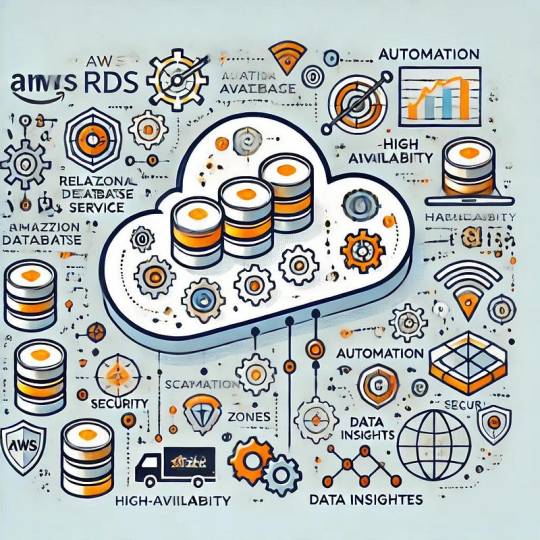
AWS RDS: Simplifying Database Management in the Cloud Amazon Relational Database Service (AWS RDS) is a fully managed service that makes setting up, operating, and scaling relational databases in the cloud simple and efficient.
AWS RDS supports popular database engines such as MySQL, PostgreSQL, Oracle, SQL Server, MariaDB, and Amazon Aurora, offering users flexibility in choosing the right database for their applications.
Key Features:
Automated Management: RDS handles routine database tasks like backups, patching, and scaling, reducing operational overhead.
High Availability: With Multi-AZ (Availability Zone) deployments, RDS ensures failover support and business continuity.
Scalability: It allows seamless scaling of database storage and compute resources to meet changing demands.
Security: Offers encryption at rest and in transit, along with integration with AWS IAM and VPC for access control.
Monitoring: Provides performance insights and integration with Amazon CloudWatch for tracking database health and metrics.
Benefits: Reduces the complexity of managing on-premises databases.
Saves time with automatic provisioning and maintenance.
Supports disaster recovery and high availability, crucial for modern applications.
Common Use Cases:
E-commerce platforms with MySQL or PostgreSQL databases.
Analytics applications using Amazon Aurora for faster query performance. Enterprise applications relying on SQL Server or Oracle databases.
AWS RDS is an ideal solution for developers and businesses looking to focus on building applications rather than managing databases.
WEBSITE: https://www.ficusoft.in/aws-training-in-chennai/
0 notes
Text
Comparing Amazon RDS and Aurora: Key Differences Explained
When it comes to choosing a database solution in the cloud, Amazon Web Services (AWS) offers a range of powerful options, with Amazon Relational Database Service (RDS) and Amazon Aurora being two of the most popular. Both services are designed to simplify database management, but they cater to different needs and use cases. In this blog, we’ll delve into the key differences between Amazon RDS and Aurora to help you make an informed decision for your applications.
If you want to advance your career at the AWS Course in Pune, you need to take a systematic approach and join up for a course that best suits your interests and will greatly expand your learning path.
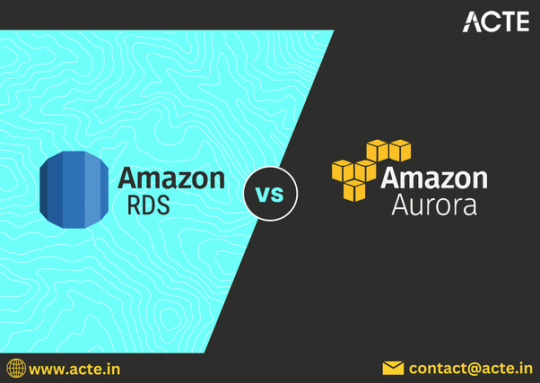
What is Amazon RDS?
Amazon RDS is a fully managed relational database service that supports multiple database engines, including MySQL, PostgreSQL, MariaDB, Oracle, and Microsoft SQL Server. It automates routine database tasks such as backups, patching, and scaling, allowing developers to focus more on application development rather than database administration.
Key Features of RDS
Multi-Engine Support: Choose from various database engines to suit your specific application needs.
Automated Backups: RDS automatically backs up your data and provides point-in-time recovery.
Read Replicas: Scale read operations by creating read replicas to offload traffic from the primary instance.
Security: RDS offers encryption at rest and in transit, along with integration with AWS Identity and Access Management (IAM).
What is Amazon Aurora?
Amazon Aurora is a cloud-native relational database designed for high performance and availability. It is compatible with MySQL and PostgreSQL, offering enhanced features that improve speed and reliability. Aurora is built to handle demanding workloads, making it an excellent choice for large-scale applications.
Key Features of Aurora
High Performance: Aurora can deliver up to five times the performance of standard MySQL databases, thanks to its unique architecture.
Auto-Scaling Storage: Automatically scales storage from 10 GB to 128 TB without any downtime, adapting to your needs seamlessly.
High Availability: Data is automatically replicated across multiple Availability Zones for robust fault tolerance and uptime.
Serverless Option: Aurora Serverless automatically adjusts capacity based on application demand, ideal for unpredictable workloads.
To master the intricacies of AWS and unlock its full potential, individuals can benefit from enrolling in the AWS Online Training.
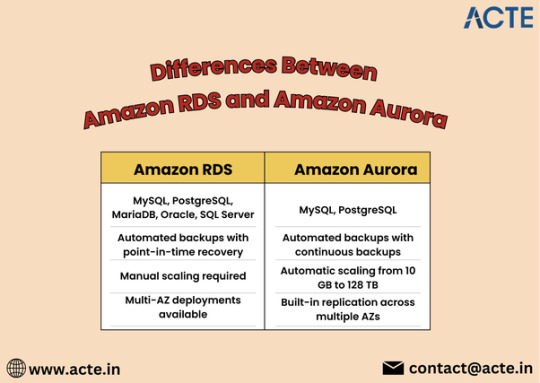
Key Differences Between Amazon RDS and Aurora
1. Performance and Scalability
One of the most significant differences lies in performance. Aurora is engineered for high throughput and low latency, making it a superior choice for applications that require fast data access. While RDS provides good performance, it may not match the efficiency of Aurora under heavy loads.
2. Cost Structure
Both services have different pricing models. RDS typically has a more straightforward pricing structure based on instance types and storage. Aurora, however, incurs costs based on the volume of data stored, I/O operations, and instance types. While Aurora may seem more expensive initially, its performance gains can result in cost savings for high-traffic applications.
3. High Availability and Fault Tolerance
Aurora inherently offers better high availability due to its design, which replicates data across multiple Availability Zones. While RDS does offer Multi-AZ deployments for high availability, Aurora’s replication and failover mechanisms provide additional resilience.
4. Feature Set
Aurora includes advanced features like cross-region replication and global databases, which are not available in standard RDS. These capabilities make Aurora an excellent option for global applications that require low-latency access across regions.
5. Management and Maintenance
Both services are managed by AWS, but Aurora requires less manual intervention for scaling and maintenance due to its automated features. This can lead to reduced operational overhead for businesses relying on Aurora.
When to Choose RDS or Aurora
Choose Amazon RDS if you need a straightforward, managed relational database solution with support for multiple engines and moderate performance needs.
Opt for Amazon Aurora if your application demands high performance, scalability, and advanced features, particularly for large-scale or global applications.
Conclusion
Amazon RDS and Amazon Aurora both offer robust solutions for managing relational databases in the cloud, but they serve different purposes. Understanding the key differences can help you select the right service based on your specific requirements. Whether you go with the simplicity of RDS or the advanced capabilities of Aurora, AWS provides the tools necessary to support your database needs effectively.
0 notes
Text

Senior Python Developer (Django) (JB5138) Bellville, Cape Town (Hybrid) R80 000 - R100 000 CTC per month Permanent An exciting opportunity awaits an experienced Senior Python Developer to lead the modernization of an insurance platform. This role involves designing and implementing scalable APIs, improving system architecture, and mentoring a development team. Minimum Requirements: Bachelor’s degree in Computer Science, Software Engineering, Information Technology, or a related field. 5 or more years of experience in Python and Django development. Experience in the insurance/ financial services industry is required. Proven expertise in API development and integrations. Solid understanding of MariaDB/MySQL and database optimization. Experience with modern DevOps practices and CI/CD pipelines. Familiarity with security best practices in financial and insurance systems. Knowledge of modern JavaScript frameworks. Familiarity with containerization and deployment automation. Proven experience with legacy system modernization.
@kontakrecruitmentagency For full JD & to apply online https://bit.ly/PythonDjangoJB5138
0 notes
Text
The Ultimate Guide to MariaDB Database Management Service by Real Cloud
In the present quick moving computerized world, productive database management is a basic part for the outcome of any business. Overseeing a lot of information and guaranteeing its openness, security, and execution requires particular devices and skill. One of the most well known and dependable database management frameworks is MariaDB. When matched with top-level services like Real Cloud's MariaDB Database Management Service, associations can use the maximum capacity of MariaDB while zeroing in on their center business tasks.
This complete aide will acquaint you with the advantages of MariaDB Database Management Service and investigate how Real Cloud can assist with upgrading your business activities through Managed MariaDB Database Services. We should plunge into how Real Cloud guarantees smooth database execution, dependability, and adaptability for your business.
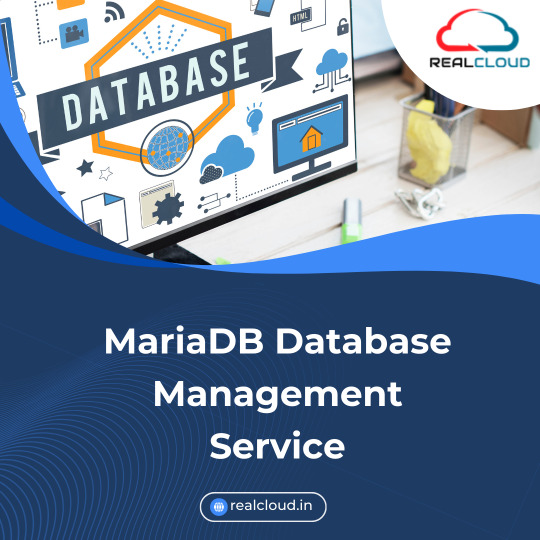
What Is MariaDB and Why Pick It for Your Database Management?
MariaDB is an open-source social database management framework (RDBMS) that is broadly utilized across organizations, everything being equal. It is intended to be exceptionally viable with MySQL, offering further developed execution, versatility, and unwavering quality. As an upgraded adaptation of MySQL, MariaDB gives a few benefits, for example, better security highlights, further developed inquiry execution, and backing for numerous capacity motors.
A few vital advantages of MariaDB include:
1. High Execution and Versatility: MariaDB is worked to deal with enormous volumes of information, guaranteeing that your database performs well significantly under weighty jobs.
2. Security: MariaDB incorporates progressed security highlights, for example, information encryption, access controls, and that's only the tip of the iceberg, guaranteeing your information stays safe.
3. Compatibility: MariaDB is completely viable with MySQL, making it simple to switch without stressing over significant changes to your codebase.
4. Community-driven: Since MariaDB is an open-source arrangement, it benefits from commitments from a worldwide local area of engineers, guaranteeing steady development and improvement.
Picking the right service supplier to deal with your MariaDB occasion is critical. That is where Real Cloud comes in. By utilizing Real Cloud's Managed MariaDB Database Services, organizations can upgrade their database execution and unwavering quality without the cerebral pain of overseeing it in-house.
What Are Managed MariaDB Database Services?
Managed MariaDB Database Services allude to rethought database management services where an outsider supplier, for example, Real Cloud, handles every one of the obligations connected with database arrangement, observing, scaling, reinforcement, and security.
As opposed to devoting in-house assets to keep a MariaDB occurrence, organizations can depend on Real Cloud to guarantee:
1. 24/7 Observing: The database is continually checked to recognize and determine any issues instantly, guaranteeing smooth tasks consistently.
2. Automated Reinforcements: Mechanized reinforcements are taken routinely, guaranteeing that information isn't lost and can be reestablished in the event of disappointment.
3. Scalability: Managed services take into consideration simple scaling of your MariaDB occasion as your business develops. Assets can be added or decreased according to your requirements.
4. Security Management: From encryption to get to control and ordinary security refreshes, Real Cloud guarantees that your MariaDB database is dependably secure from weaknesses.
By picking Real Cloud's Managed MariaDB Database Services, organizations can liberate themselves from the weight of overseeing complex databases and can zero in on their development and advancement.
Key Highlights of Real Cloud's MariaDB Database Management Service
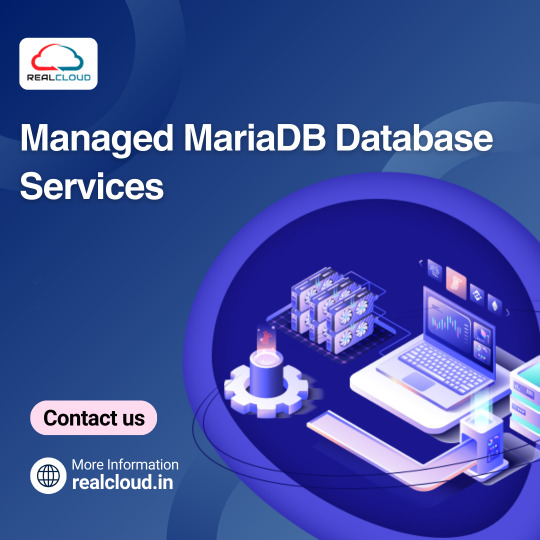
1. High Accessibility and Unwavering quality
With regards to databases, uptime is urgent. Real Cloud guarantees high accessibility by setting up a high-accessibility engineering that ensures your MariaDB case stays functional consistently. Real Cloud's MariaDB Database Management Service offers:
• Bunched Arrangements: Real Cloud uses grouped MariaDB arrangements to guarantee overt repetitiveness and nonstop accessibility.
• Failover Arrangements: if there should be an occurrence of an equipment disappointment, Real Cloud has mechanized failover components set up to guarantee negligible free time.
With these failover and overt repetitiveness arrangements, your business' basic applications can run without interference, guaranteeing that your activities go on without a hitch.
2. Upgraded Execution
The exhibition of your MariaDB database can represent the deciding moment your business. Real Cloud utilizes the most recent exhibition tuning procedures to guarantee that your MariaDB database runs at its maximum capacity. A portion of the presentation upgrading services presented by Real Cloud include:
• Question Advancement: Real Cloud's group of specialists consistently enhances slow inquiries to guarantee the most ideal database execution.
• Ordering and Storing: Real Cloud's MariaDB service carries out cutting edge ordering and reserving systems to accelerate question reactions and by and large execution.
• Server Enhancement: The hidden foundation is constantly checked and upgraded for maximized execution, guaranteeing that database questions are dealt with productively.
3. all day, every day Checking and Backing
Database management requires consistent consideration. Real Cloud's MariaDB Database Management Service offers every minute of every day observing, guaranteeing that any issues, whether minor or major, are immediately recognized and tended to. The advantages of this service include:
• Proactive Alarms: You'll get warnings and cautions on any exhibition or security issues so they can be tended to instantly.
• Real-Time Issue Goal: With nonstop help, your issues are settled in real time, limiting any free time for your business.
4. Robotized Reinforcements and Recuperation
Information is the soul of any association, and guaranteeing it's upheld consistently is indispensable. Real Cloud gives completely robotized reinforcements to MariaDB databases, guaranteeing that your information is protected even in case of a calamity. A portion of the reinforcement related services include:
• Robotized Day to day Reinforcements: Real Cloud's framework consequently backs up your database, so you don't need to stress over manual mediation.
• Particular moment Recuperation: On the off chance that you want to reestablish a database partially, Real Cloud's services remember point-for time recuperation choices.
• Offsite Reinforcements: Reinforcements are put away safely offsite to guarantee that information can be reestablished if there should be an occurrence of a server disappointment or different crises.
5. Security Management
Security is one of the main parts of MariaDB Database Management. Real Cloud guarantees that your MariaDB database is secure with the accompanying:
• Information Encryption: Touchy information is encoded both very still and on the way, giving an extra layer of insurance.
• Access Control: Real Cloud guarantees severe access control systems, permitting just approved faculty to get to delicate information.
• Customary Security Reviews: Ordinary security reviews and weakness evaluations are done to guarantee the database stays secure.
Why Pick Real Cloud for Your Managed MariaDB Database Services?
1. Expertise and Experience: With long periods of involvement with cloud figuring and database management, Real Cloud has the information and skill to deal with any test related with MariaDB database management.
2. Scalability: Real Cloud's MariaDB Database Management Service offers the adaptability to scale your database assets as your business develops, guaranteeing that your database is consistently ready to deal with expanded traffic and jobs.
3. Cost-Effectiveness: By re-appropriating your MariaDB database management to Real Cloud, you dispose of the requirement for costly in-house database heads and foundation, in this manner fundamentally lessening your functional expenses.
4. Customizable Arrangements: Whether you want an essential arrangement or an intricate, high-accessibility MariaDB group, Real Cloud offers adjustable answers for meet your extraordinary business needs.
Real Cloud's Managed MariaDB Database Service: Your Accomplice in Database Achievement
In the present cutthroat climate, having a dependable and effective database framework is pivotal to your business' prosperity. MariaDB, with its demonstrated presentation and versatility, offers a strong answer for your information management needs. By utilizing Real Cloud's Managed MariaDB Database Services, you guarantee that your database is improved, secure, and consistently accessible, giving you inward feeling of harmony to zero in on what makes the biggest difference — developing your business.
Whether you are running an online business stage, a monetary application, or some other information driven business, Real Cloud guarantees that your MariaDB database works flawlessly, assisting you with remaining in front of the opposition.
For more data on how Real Cloud can assist you with dealing with your MariaDB database effectively, contact us today and let our group of specialists guide you through the interaction.
Conclusion
Picking Real Cloud's MariaDB Database Management Service is perhaps of the best choice you can make for your business. With Managed MariaDB Database Services that offer high accessibility, execution streamlining, all day, every day support, robotized reinforcements, and high level security highlights, Real Cloud guarantees that your database is consistently in master hands. Allow Real Cloud to deal with your MariaDB occurrence while you center around extending your business.
0 notes